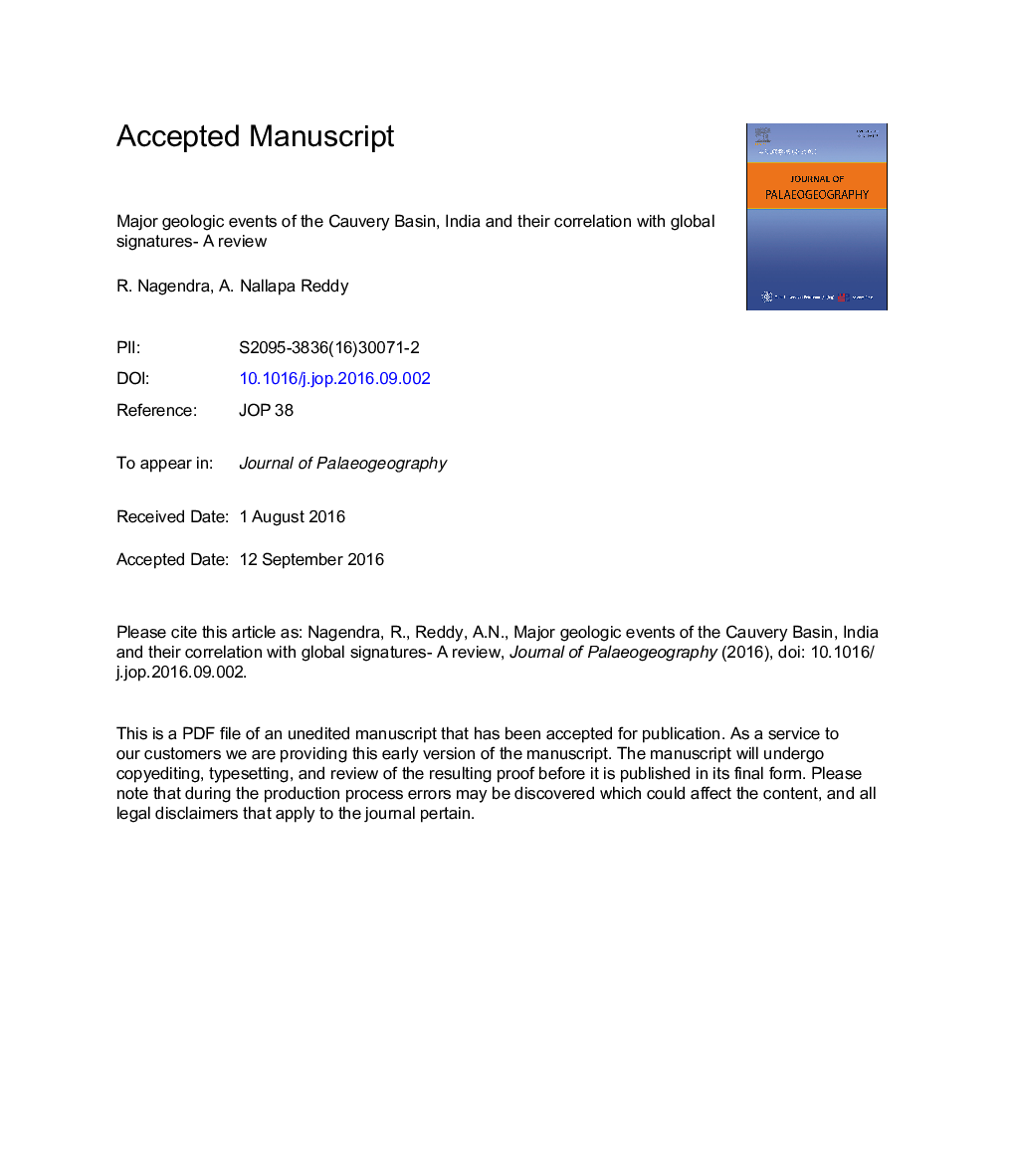| کد مقاله | کد نشریه | سال انتشار | مقاله انگلیسی | نسخه تمام متن |
|---|---|---|---|---|
| 8895353 | 1630318 | 2017 | 25 صفحه PDF | دانلود رایگان |
عنوان انگلیسی مقاله ISI
Major geologic events of the Cauvery Basin, India and their correlation with global signatures - A review
دانلود مقاله + سفارش ترجمه
دانلود مقاله ISI انگلیسی
رایگان برای ایرانیان
کلمات کلیدی
موضوعات مرتبط
علوم زیستی و بیوفناوری
علوم کشاورزی و بیولوژیک
دانش خاک شناسی
پیش نمایش صفحه اول مقاله

چکیده انگلیسی
The present review is aimed at correlating major geologic events of the Cauvery Basin with analogous global episodes. The Cauvery Basin came into existence due to Gondwana break up during Late Jurassic-Early Cretaceous by taphrogenic rift process. The first marine transgression close to Aptian/Albian boundary at the western margin of the basin terminates the syn-rift tectonic phase, which is also precise in adjoining Krishna-Godavari (KG) Basin. Two regional tectonic episodes are well documented in the basin which have global significance viz. (1) A major basinal uplift during late Turonian caused by Marion hot mantle plume resulted in widespread subaqueous volcanism in the southern part of the Cauvery Basin. This uplift also led to relative sea level (RSL) fall of about 100Â m in Cauvery and KG Basins and an unconformity of a magnitude of 2.3Â Ma. The RSL fall closely correlates with global sea level fall. This volcanic episode also resulted in Madagascar detachment from India. (2) The reunion hot mantle plume that led to Deccan volcanism in central India resulted in E-SE tilt of the Cauvery Basin during upper Maastrichtian (CF1-CF3 zones). This tilt caused a sea level fall of about 80Â m and lateral withdrawal of sea by about 50Â km developing a major erosional unconformity ranging in magnitude of â¼1.8-30 My. The magnitude of RSL correlates well with global sea level fall. This sea level fall caused widespread development of canyon features in the Cauvery Basin resulting in differential subaqueous erosion. The globally significant ocean anoxic events viz. OAE-1b, OAE-1d, OAE-2 and OAE-3 are fairly discernible in the Cauvery Basin. The new isotopic palaeotemperature data suggests that southern India and Madagascar were located apparently in middle latitudes within the tropical-subtropical climatic zone during Albian and early Maastrichtian. The magnitude of hiatus across K-Pg boundary varying from 0 to 30 Ma is estimated based on planktic foraminifera for subsurface sections. The magnetostratigraphy of outcrop sediments with rich fossil evidences reveals that magnetic polarity reversals consist of 13 magnetozones in the Late Cretaceous sedimentary strata.
ناشر
Database: Elsevier - ScienceDirect (ساینس دایرکت)
Journal: Journal of Palaeogeography - Volume 6, Issue 1, January 2017, Pages 69-83
Journal: Journal of Palaeogeography - Volume 6, Issue 1, January 2017, Pages 69-83
نویسندگان
R. Nagendra, A. Nallapa Reddy,